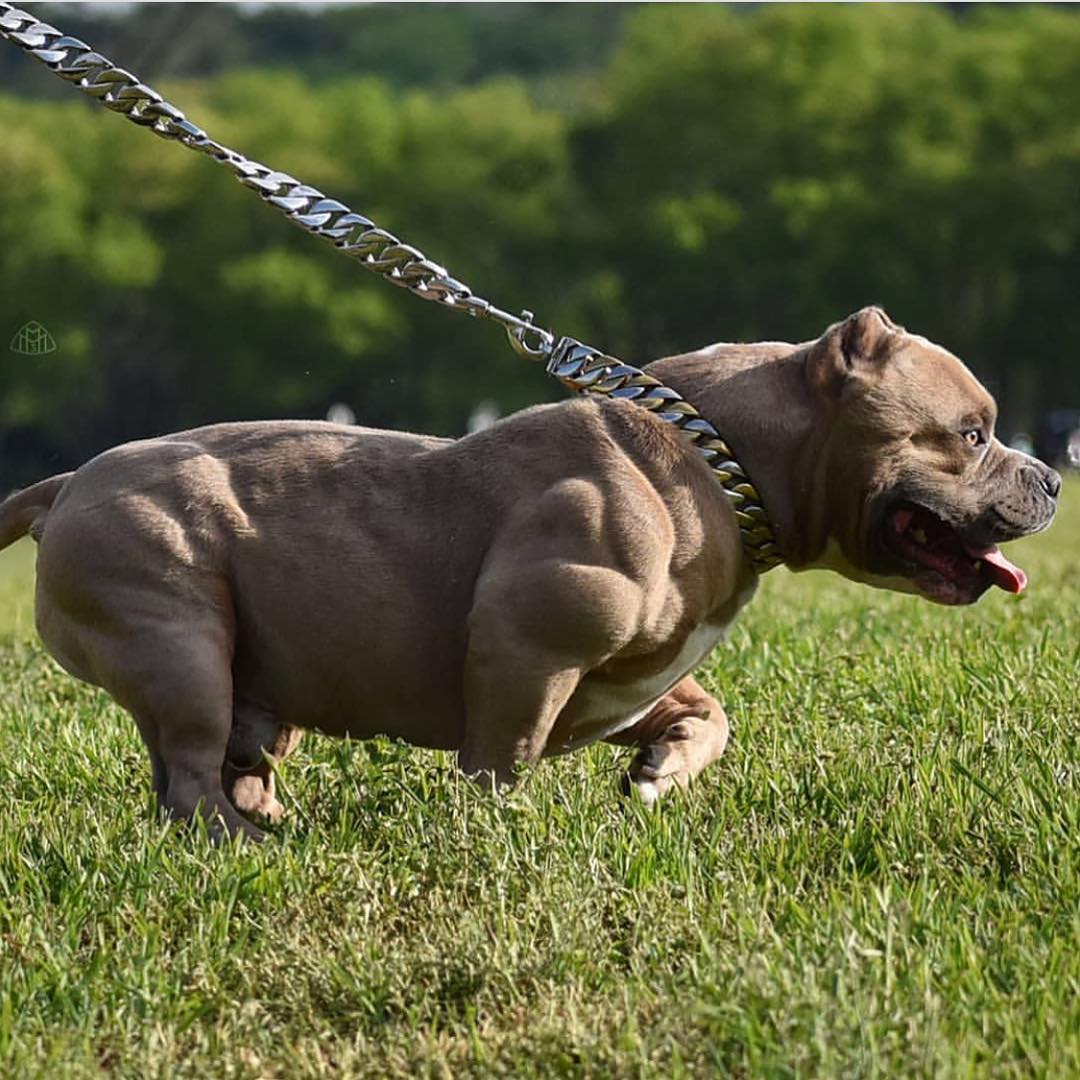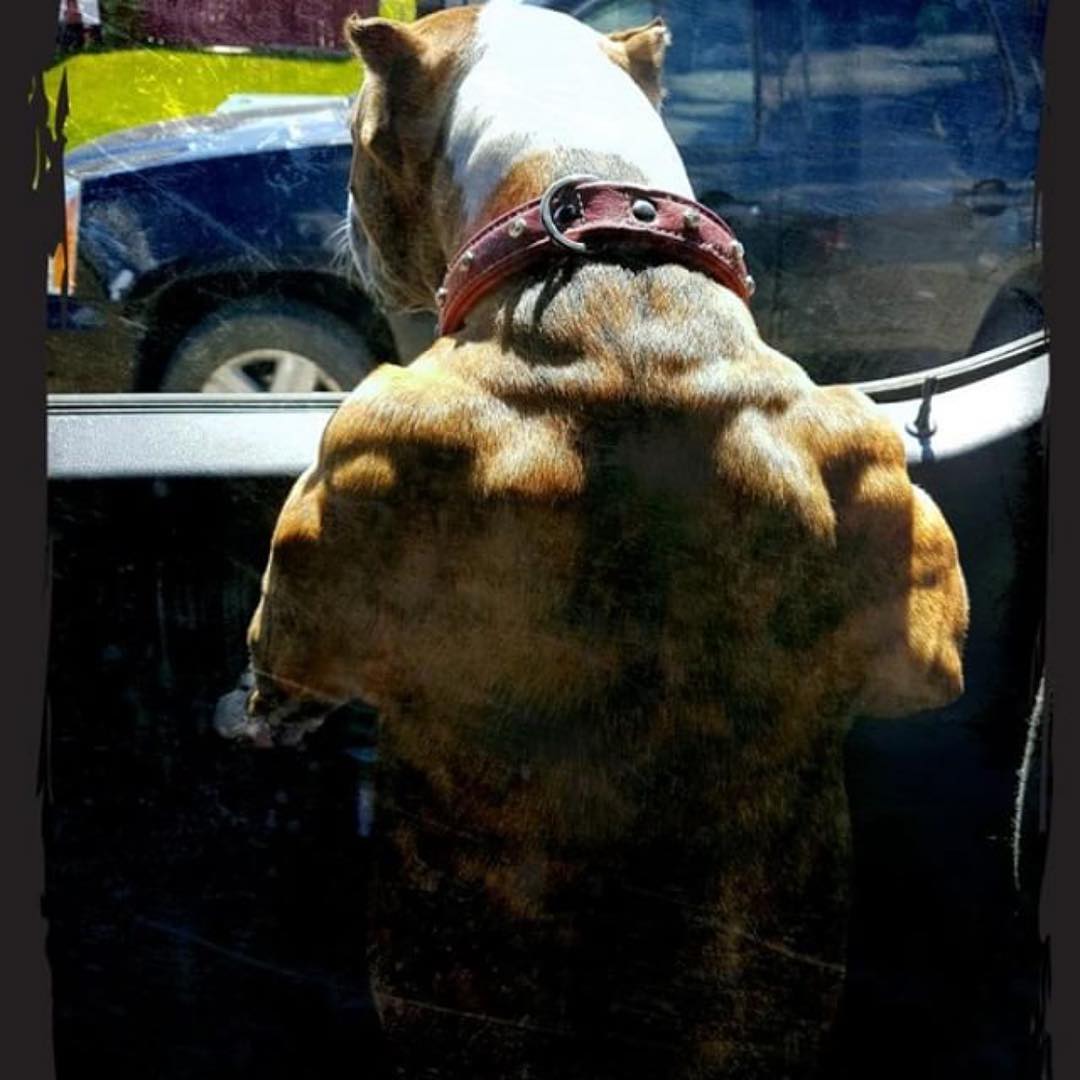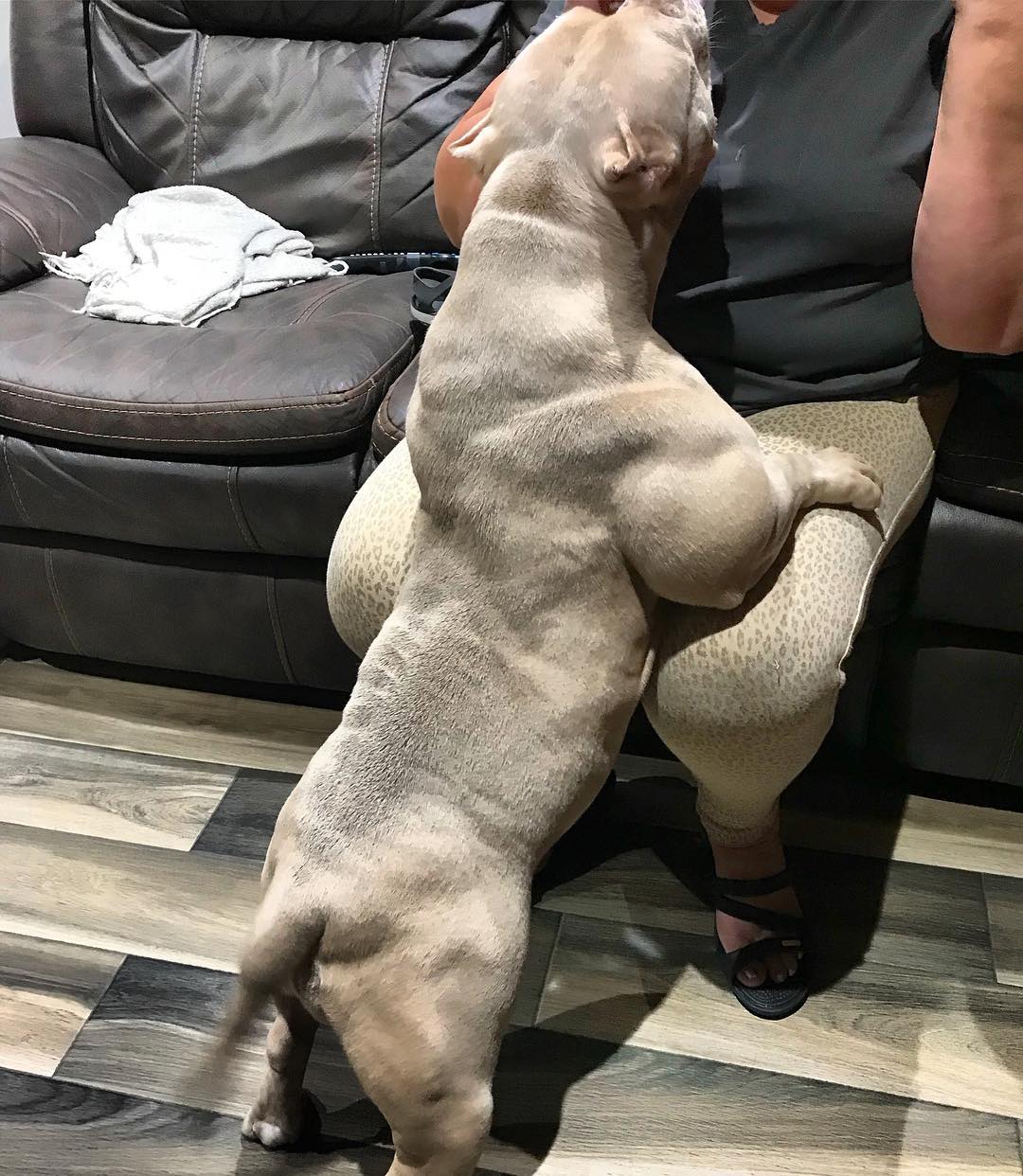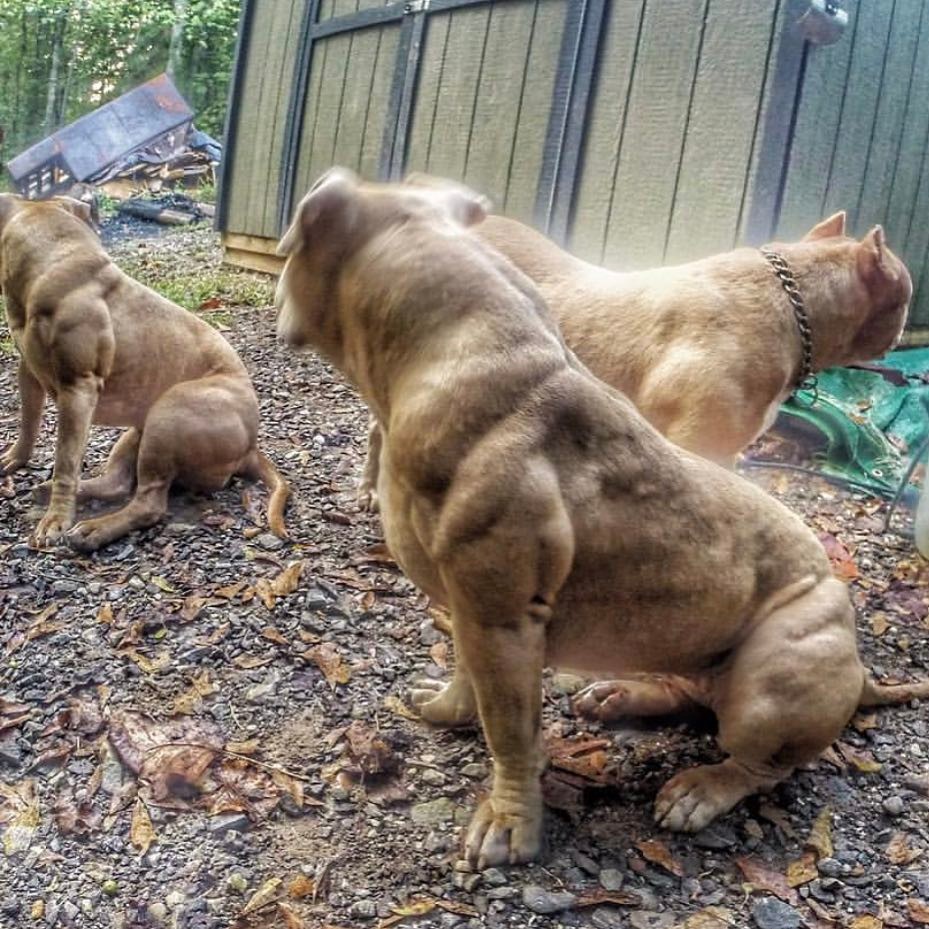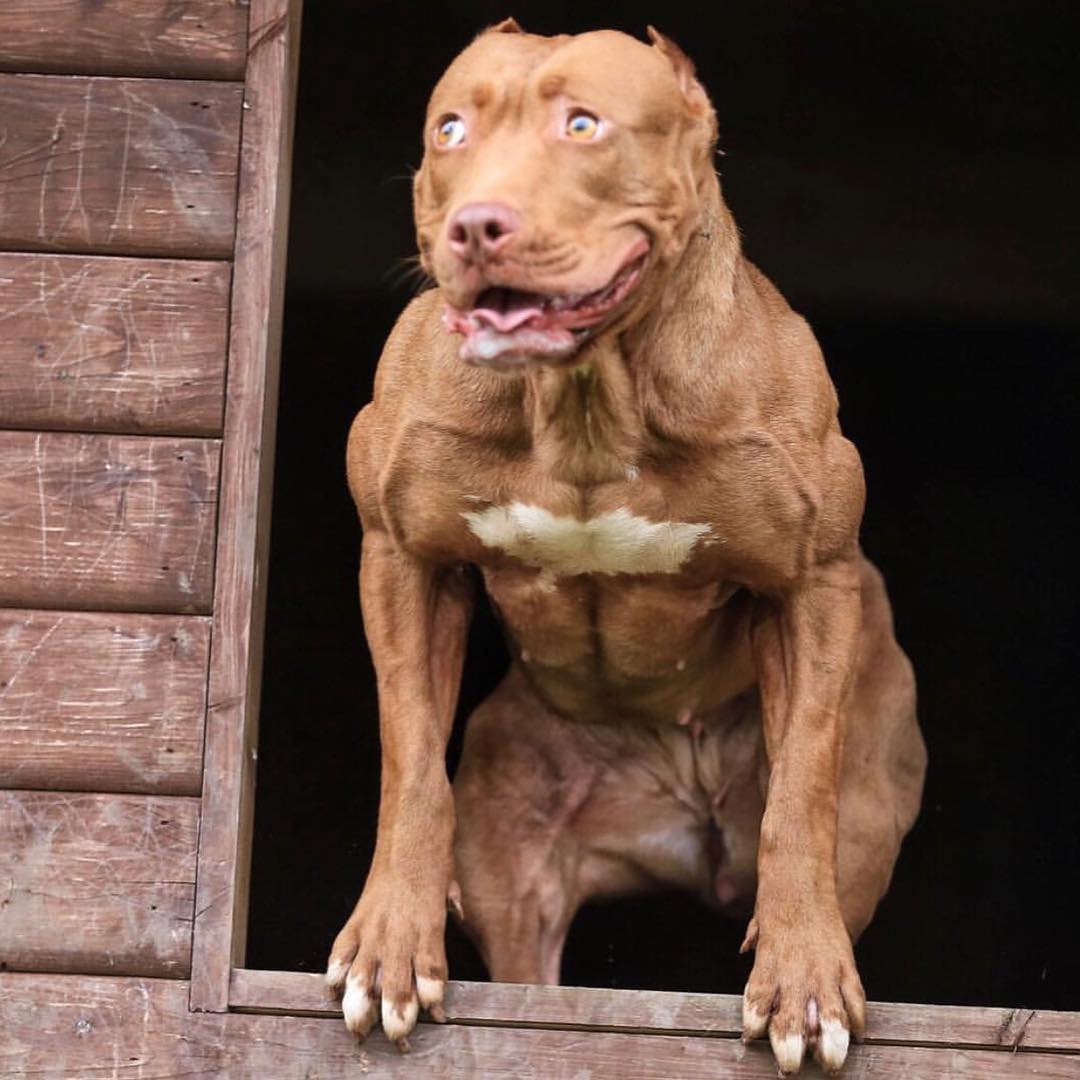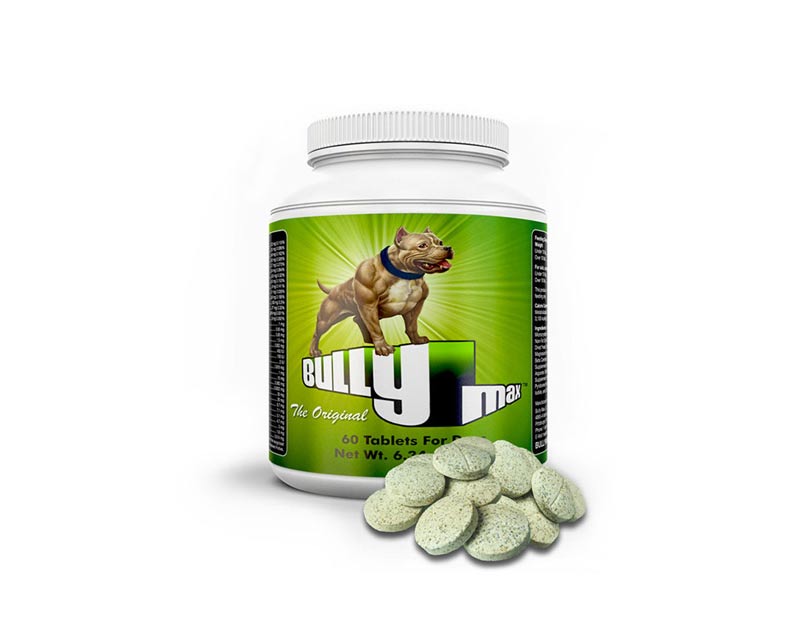
If you’re a dog owner who loves your pet, and wants to help your dog build natural, healthy muscle…then you’re going to love this:
The world’s most effective muscle-building supplement for dogs just got even better!
What’s this all about?
We’ve updated and expanded our formula to include even more all-natural muscle-building ingredients.
Keep reading to learn more about our all-new formula and how it can help turn your dog into a bigger, faster, stronger, and healthier version of themselves!
How We Improved Bully Max
Bully Max now contains 19 powerful muscle-building ingredients. Here’s an updated list of the all-natural ingredients in our new & improved formula:
ZMA (Zinc, Magnesium Aspartate, & Vitamin B6)
ZMA is one of the most effective muscle-building supplements that has been used by world-class bodybuilders and professional athletes all over the world. Made up of Zinc, Magnesium Aspartate, and Vitamin B6, ZMA works by replenishing lost minerals that your dog’s body needs to produce the muscle-building hormone testosterone. Clinical trials have shown that supplementing athletes with ZMA can increase strength and muscle while improving healing rate and deep sleep.
Leucine
Of all the amino acids, leucine is the one most directly related to protein synthesis and muscle building. Simply put: it’s an essential nutrient for any dog to grow bigger, stronger, and healthier, and that’s why it’s a big part of our new Bully Max formula.
Isoleucine
Isoleucine is one of the essential branched-chain amino acids (BCAAs), which makes it one of the body’s vital building-blocks for protein. It helps to prevent muscle breakdown and increase lean muscle mass by speeding muscle recovery after exercise.
Lysine
Lysine plays an important role in helping your dog’s body to build muscle and produce the hormones, antibodies, and enzymes they need to stay strong and healthy. It’s also an important element in the absorption of another vital muscle-building ingredient, calcium.
Methionine
Methionine is an important sulfur-containing amino acid that works as an antioxidant, meaning it helps to inactivate harmful free radicals in your dog’s body. Interestingly, methionine is also the only amino acid that can be at the head of a growing protein strand—which makes it a critical nutrient for any growing dog.
Cysteine
Cysteine plays a crucial role in the production of taurine and glutamine, both of which are critical components for optimal health: taurine helps in fat burning and muscle building, while glutathione is the body’s master antioxidant that helps maintain healthy cellular functioning.
Phenylalanine
Phenylalanine is an essential amino acid and has beneficial effects in optimizing neurotransmitter levels—resulting in a happier, healthier dog.
Threonine
Threonine is an amino acid that is not produced by the body, which means it must be obtained from the idet. One of threonine’s main functions is helping the body to produce collagen and elastin, critical substances for healthy skin & bones. Threonine is also an easily absorbed amino acid, which means it has high bioavailability and is highly likely to be absorbed & used by your dog.
Tryptophan
Recent studies have shown that supplementation with tryptophan may help decrease fatigue while increasing growth hormone, making it an essential muscle-building ingredient for your dog.
Valine
Valine is used in muscle metabolism and tissue repair, making it an especially useful supplement right after a training session. Valine also helps to maintain a positive nitrogen balance in the body, keeping your dog in an anabolic (muscle-building) state.
Calcium
Calcium is an important mineral involved in muscle contractions. Without sufficient calcium, your dog’s muscles will have less potential energy stored to perform contractions, which means their ability to build muscle will be compromised. As you probably know, calcium is also an essential mineral for bone health. That’s why we include a generous 100 mg in every serving of Bully Max.
Potassium
Potassium is an electrolyte that helps improve muscle function. If your dog’s body is low in potassium, it can result in muscle soreness and cramping that can bring workouts to a standstill. Potassium can be lost through sweating and dehydration, which makes it an important mineral to supplement in dogs who undergo rigorous workouts.
Manganese
Manganese is a vital mineral involved in bone development, wound healing, and also contains antioxidant properties. It also plays a necessary role in metabolizing substances such as amino acids, which makes it an essential part of the muscle-building process.
Aspartic Acid
The all-natural amino acid aspartic acid is used by bodybuilders to promote improved athletic performance and muscle growth by promoting higher levels of the anabolic hormone testosterone.
Serine
Serine is essential for both physical and mental health. It also helps to build muscle mass, support healthy muscle functioning, and increase the body’s absorption of the muscle-building compound creatine.
Tyrosine
The amino acid tyrosine, which is found naturally in meats, acts a hormone precursor that has been shown to increase the intensity and focus of training sessions—in other words, it can help alleviate the effects of fatigue and keep your dog focused during extended workouts.
Histidine & Alanine
Alanine & histidine are amino acids that, when combined together, form the dipeptide known as carnosine. Carnosine is a powerful intracellular buffer that helps your dog’s muscles to remain strong while maintaining powerful contractions during exercise.
Glycine
Glycine is one of 20 amino acids used to make protein in the body, which makes it an essential ingredient in muscle-building.
Still Quick & Easy to Use
Despite all the exciting changes to our formula, there’s one thing about Bully Max that hasn’t changed:
It’s still super quick & easy to use.
No need to mix or measure. No spoon or measuring cups involved. No mess, no fuss, no problem.
Bully Max comes in a convenient chewable tablet, so all you have to do is feed it to your dog like a treat. Dogs love the tasty beef flavor!
Builds Muscle Faster Than Ever
If you scan through the ingredients of our all-new and improved formula, you’ll notice that the new Bully Max contains a much wider array of amino acids. So what are amino acids and why are they so important to your dog’s health and muscle growth?
Basically amino acids are the “building blocks” of protein, the substance that makes up skeletal muscle. And just like you can’t build a brick house without bricks, your dog can’t build muscle without enough high-quality amino acids in their body.
We’ve included a broad spectrum of essential and nonessential amino acids (such as leucine, methionine, lysine, threonine, valine, and many more) to help deliver the optimal proteins in the right ratios.
As a result, your dog will be supplied with the nutrients they need to recover from exercise and build more muscle, faster than ever before.
For All Breeds Ages 7 Weeks And Older
Bully Max is extremely popular with pit bull owners who want to help their dog become bigger, stronger, and healthier. But Bully Max isn’t just for pit bulls!
Rest assured that our new formula has been veterinarian-approved for ALL breeds ages 7 weeks and older—including dogs who are pregnant or nursing. So no matter what kind of dog you have you can feel safe giving them Bully Max, the world’s most trusted & effective muscle-building supplement for dogs.
100% Safe & Healthy
Bully Max contains no harmful artificial ingredients, steroids, or anything that could harm or cause side-effects to your dog. It’s formulated & approved by veterinarians and made with 100% safe & healthy ingredients.
Here at Bully Max, we know you don’t just want your dog to get bigger & stronger. You want them to be healthy, happy, and vibrant. And that’s what we want, too!
Recommended Workouts
If you give your dog Bully Max without engaging in any sort of exercise, your dog will gain a moderate amount of strength & muscle. But to really get the best results possible, you should put your dog through regular workouts to test their strength and stimulate new muscle growth.
To learn more about some of the most effective workouts for your dog, check out our blog post titled Top muscle-building exercises for dogs. Specifically, pay attention to exercises #1 & #2: the spring pole and the flirt pole.
These are the top 2 exercises we recommend for your dog.
The good news is that the equipment for these exercises is inexpensive and fairly easy to make by yourself at home. We’ve even put together a helpful guide to guide you through the creation of your very own spring pole & flirt pole:
Want The Best Possible Results For Your Dog?
In addition to regular exercise, there’s one more thing you can do to make sure your dog experiences that absolute best results possible:
Make sure your dog is eating high-quality performance dog food with adequate protein, fat, & calories.
Most commercial dog food available in stores is loaded with fillers, low-quality meat byproducts, and artificial ingredients that don’t belong in your dog’s body.
Our is hands-down the best on the market, and we’ve got the 5/5 star rating from Dog Food Advisor to prove it. It’s a performance-based dog food you can actually feel GOOD about giving your dog.
Learn more about Bully Max 30/20 High Performance Dog Food here.
Why Choose Bully Max?
Simply put, Bully Max is the best-selling, highest-rated, and most effective muscle-building supplement for dogs in the world. And there are 6 big reasons why we continue to lead the pack when it comes to helping dog owners like you to build bigger, stronger, healthier dogs:
- More Muscle-Building Ingredients: Bully Max contains 19 powerful muscle-building ingredients—more than any other brand!
- No Hidden Ingredients: Our products contain NO mystery ingredients. Every ingredient is clearly listed on the bag.
- Tested by a Third-Party Lab: All our formulas are tested by the University of Kentucky for purity, safety, and quality.
- 100% Satisfaction Guaranteed: Bully Max is the only brand that guarantees results in writing. If you don’t love the results, it’s FREE.
- Trusted by Veterinarians: Bully Max is the only brand formulated and approved by real, working veterinarians.
- 100% Safe & All-Natural: We use only all-natural ingredients with NO artificial flavors, colors, or preservatives.
